Blog Archive
R30
| Also called | New-man SKYLINE(1983-1985) |
|---|---|
| Production | 1981-1985 406,432 units sold |
| Assembly | Tochigi, Tochigi, Japan |
| Body style(s) | 4-door sedan 2-door coupe 5-door hatchback 5-door station wagon |
| Layout | FR layout |
| Engine(s) | 1.8 L Z18S I4 1.8 L CA18E I4 2.0 L Z20E I4 2.8 L LD28 I6 2.0 L L20E I6 2.0 L L20ET I6 2.4 L L24E I6 2.8 L L28E I6 2.0 L FJ20E I4 2.0 L FJ20ET I4 |
| Related | Nissan Laurel |
All versions with the exception of the wagon were usually fitted with the four round tail lights that had become a regular feature to the Skyline's design. The wagon was the ugly duckling of the range, having different tail lights, headlights and no turbo or 6-cylinder versions available - it more closely resembled a Nissan Sunny than a Skyline. The two door coupe had pillarless doors and the unusual feature of roll-down quarter windows for the rear seat passengers (a styling feature of the previous C10, C110 and C211 coupes), while four door versions all had traditional framed windows.
Notably, configurations of the R30 sold in Australia and New Zealand were missing the traditional hotplate tail lights, instead opting for more conventional styling.
Various engine configurations were available, initially ranging from the top of the line 103 kW SOHC 6-cylinder turbo L20ET to the 4-cylinder Z18S and 6-cylinder RD28 diesel versions at the other end of the scale. The all-new 16-valve DOHC FJ20 engine debuted in late 1981, and was the first 4-cylinder engine by any Japanese manufacturer to employ more than two valves per cylinder (see below). Some of the top spec models featured adjustable suspension dampers that could be adjusted while driving, this was another first for mass produced JDM vehicles. Nissan Glorias and Laurels also used the L series engines as well as some diesel (Laurel only) variants.
The R30 range was facelifted in August 1983 with various changes across the board; for example four wheel disc brakes were now standard issue, instead of being optional for lower-spec models. Trim specifications were revised and the 4-cylinder Z18S engine was replaced with the newer CA18E. Upgraded interior trim, new front and rear bumpers, door-mounted wing mirrors (replacing the old 'hockey stick' fender mirrors) and smoked tail lights rounded out the look.
Paul Newman Version
Also that year the Paul Newman Version R30 was released to commemorate the association between Nissan and the actor Paul Newman, who used to appear in promotional material as well as race for the company in the late 1970s - early 1980s. The Newman Skyline was simply a top spec GT-ES turbo with signature embroidery and decals, and is still sought after today amongst collectors in Japan.RS
Although making about the same power as the L20ET-powered GT-ES models, the version of the Skyline initially known as the 2000RS was released in October 1981 as more of a stripped-down lightweight racer, without as many luxury extras included (quoted curb weight was only 1,130 kg (2,500 lb)). These were equipped with the naturally aspirated 4-valve per cylinder DOHC FJ20E engine generating 110 kW (150 PS; 148 hp) of power at 6000 rpm and 181 N·m (133 lb·ft) of torque at 4800 rpm. The official Nissan chassis designation for all FJ20-powered models was DR30.In February 1983 the DR30 range received a significant boost in performance with the introduction of the turbocharged FJ20ET engine in the 2000RS-Turbo. Front brakes were also significantly upgraded to cope with the power increase. Now with 140 kW (190 PS; 188 hp) of power at 6400 rpm and 225 N·m (166 lb·ft) of torque at 4800 rpm on tap, the FJ20ET enjoyed new-found prestige as the most powerful Japanese production engine of its era.
Nissan sought to elevate the status of the DR30 Skyline as their new flagship model in light of this success, and it received a generous amount of changes to distinguish it from lesser Skyline models in August 1983. Interior equipment was significantly upgraded to now include electric windows, air conditioning and power steering as standard in the new RS-X model (for Extra) with an increased curb weight of around 1,235 kg (2,723 lb); gone were the days of the spartan, stripped-out race interior, although this could still be specified at time of purchase. But by far the most striking change to the RS was the new unique front end treatment, nicknamed Tekamen (鉄仮面) or Iron Mask by fans for its distinctive look. The headlights were considerably slimmer, and instead of a conventional grille the bonnet now sloped down to two narrow slits above a facelifted front bumper and airdam.[10].
Further changes were made in 1984, most notably the addition of an intercooler, revised compression ratios and turbocharger exhaust housing to the FJ20ET powered model, now known as the RS-Turbo C and increasing output to 151 kW (205 PS; 202 hp) of power at 6400 rpm and 245 N·m (181 lb·ft) of torque at 4400 rpm. An automatic transmission option was also added at this time, and changes to the "PLASMA Spark" ignition system followed in early 1985 towards the end of R30 production.
To this day the FJ20-powered R30 Skyline remains a cult car both at home and overseas (there are still dedicated "one make" drag racing events for this model in Japan), and is credited with rejuvenating the Skyline brand in the early 1980s. It also paved the way for the eventual re-introduction of the legendary GT-R badge, markedly absent since the end of C110 Skyline production in 1973.
The RS achieved moderate success in Australian Touring car racing in the mid-1980s with Nissan winning the 1986 Australian Manufacturers' Championship [11] and sharing victory in the 1987 Australian Manufacturers' Championship with BMW.[12]
Models: (Japan)
- 1800TI - 1.8 L Z18S SOHC I4, 105 hp (77 kW), later models 1.8 L CA18S SOHC I4, 105 hp (77 kW)
- 2000TI - 2.0 L CA20E SOHC I4
- 2000TI - 2.0 L Z20E SOHC I4
- 280D GT - 2.8 L LD28 SOHC I6 Diesel
- 2000GT and Passage - 2.0 L L20E SOHC I6
- 2000GT Turbo, Passage and Paul Newman Version - 2.0 L L20ET turbo I6, 140 hp (103 kW, 206 N m)
- RS - 2.0 L FJ20E DOHC I4, 150 hp (112 kW, 181 N m)
- RS-X and RS-X Turbo C - 2.0 L FJ20ET DOHC turbo I4, 190 to 205 hp (140 to 151 kW, 225 to 245 N m)

Label
- Alkitab (5)
- anime (14)
- Arti nama (3)
- Automotif (138)
- Award (1)
- Bahaya (1)
- Bangunan Unik (8)
- belajar html (1)
- benda (24)
- Binatang (36)
- Biografi (81)
- Biologi (6)
- buah (12)
- cara belajar (2)
- CIA (1)
- Community (2)
- contact (1)
- Daerah (18)
- Dewa (2)
- Dijual (1)
- Download software (5)
- drift (1)
- Ekonomi (1)
- FBI (1)
- film (33)
- Fisika (11)
- Game (37)
- ganti kusor blog (1)
- Geografi (27)
- hacker (7)
- Hewan Punah (5)
- Ilmu (48)
- ilmu Beladiri (4)
- Istilah (5)
- kata kata bijak (2)
- kata2 bijak (1)
- Kecepatan (14)
- kimia (1)
- kisah nyata (6)
- Komputer (7)
- Kristen (4)
- kuno (6)
- LAPD (1)
- link (2)
- lirik lagu (3)
- membuat virus (1)
- membuat virus melalui notepad (1)
- membuat virus via notepad (1)
- Misteri (67)
- Misteri dunia (51)
- Mitos (10)
- NASA (88)
- negara (5)
- Organisasi (2)
- Parkour (1)
- Pelajaran (1)
- Perjalanan (1)
- Perkembangan (2)
- petshop (9)
- petugas (1)
- PKN (3)
- pohon (5)
- Puisi (1)
- pulau (9)
- Rahasia (1)
- rubic (2)
- Saion (1)
- sastra (3)
- sejarah (29)
- Senjata (73)
- situs populer (7)
- Sniper (1)
- tata surya (27)
- Teknik (15)
- telepati (1)
- Tenga dalam (1)
- the power of kepepet (1)
- The Three Kingdom (8)
- TIps Binatang (10)
- Tips blogger (4)
- tradisi (9)
- tragedi (4)
- trick magic (2)
- Tumbuhan (1)
- UFO (1)
- Yesus (2)
Loading
Tian's Fan Box
Tian on Facebook
Copyright 2010 Tian
Theme designed by Lorelei Web Design
Blogger Templates by Blogger Template Place | supported by One-4-All
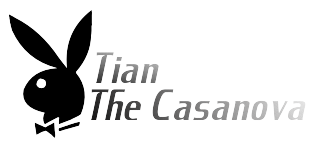

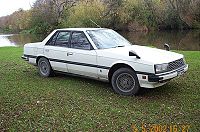
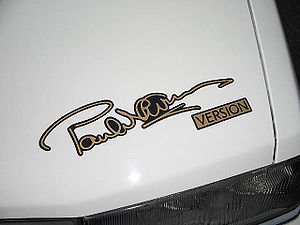
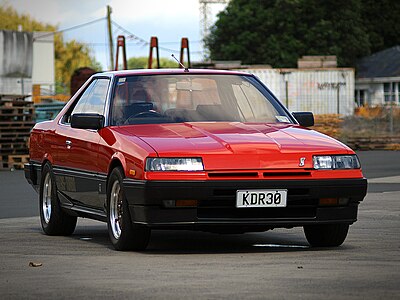
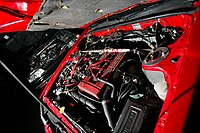
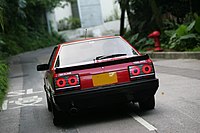




0 komentar:
Posting Komentar